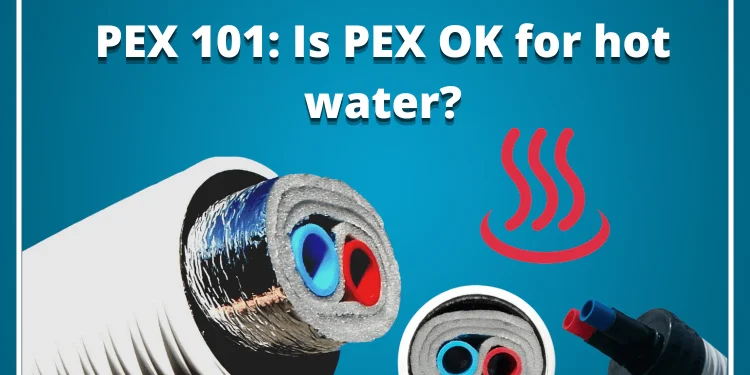Outdoor Boiler Plumbing 101: The Difference Between Type A and Type B PEX
Heating your home or business with an outdoor wood boiler already demonstrates commitment toward an efficient and sustainable source of warmth, and yet the success of the whole system leaves so much to depend on what is arguably one of its most overlooked components: the type of PEX piping that connects the boiler to its indoor system.
Many homeowners unaware that PEX- A and PEX-B are among the several types of PEX-A and B for hot water applications, apparently similar, but extremely different regarding performance, cost, and long-term reliability. Using the wrong type of PEX means needless expense, heat loss, or premature failure.
This comprehensive guide should take you step by step through the comparison of types of PEX, their advantages, disadvantages, and best applications, which will aid in your decision-making process. So let’s get started.
Understanding the Basics of PEXWhat Is PEX?
According to this article, cross-linked polyethylene is what PEX stands for, and it is used in flexible plastic tubing plumbing and hydronic (hot water-based) heating) systems. For the last 20 years, it has become the gold standard for plumbing works in homes and businesses.
In outdoor boiler applications, PEX is used to carry hot water from the boiler (often located in an exterior shed or other structure) to the heating system inside the building.
Why PEX for Outdoor Boilers?
PEX is ideal for this because of its:
- High temperature resistance
- Flexibility, which allows for easier underground installation
- Resistance to freezing and cracking
- Chemical and corrosion resistance
- Lower cost compared to copper or steel
But not all PEX is created equal. There are three types—PEX-A, PEX-B, and PEX-C—but only two are commonly used in outdoor heating systems: PEX-A and PEX-B. You can read more HERE.
Manufacturing Differences: PEX-A vs. PEX-B
The primary difference between PEX-A and PEX-B lies in the manufacturing process, which directly impacts their flexibility, strength, and price.
What Is Crosslinking?
Crosslinking is basically the tie-up of polyethylene molecules, resulting in strength, heat resistance, and flexibility. PEX-A possesses uniform cross-linking before extrusion, while PEX-B is cross-linked after extrusion, resulting in a tighter but stronger molecular structure with reduced flexibility.
Side-by-Side Comparison for Outdoor Boiler Use
Let’s break this down further by looking at the traits that really matter for outdoor boiler installations.
1. Temperature and Pressure Ratings
PEX-A and PEX-B are both rated for:
- 180°F at 100 psi (typical for boiler systems)
- With short-term exposure up to 200°F
However, PEX-B has a higher burst pressure—a major benefit when handling high-pressure systems or long underground pipe runs with potential ground shifting.
2. Flexibility and Handling
PEX-A, on being more pliable, snakes tighter to corners and through joists. This is better for the cramped crawl space or tricky retrofits.
However, in outdoor boiler applications, most of your run will be a straight underground path, where flexibility does not matter as much as durability and strength do. PEX-B excels in that regard.
3. Fitting Systems
PEX-A uses expansion fittings such as the Uponor/Wirsbo system, which need a special tool to expand the pipe prior to insertion of the fitting.
In contrast, PEX-B uses crimp or clamp fittings, which can be found almost anywhere and are simpler for the do-it-yourself types.
Since PEX-B does not need any special expansion tools, it cuts down installation time and cost and is, therefore, easier and cheaper for most house owners.
4. Shape Memory
PEX-A possesses amazing memory in form; it merely returns to its original form after twisting or bending. This is, of course, useful in indoor plumbing because space is definitely a consideration. Not relevant when considering long, straight distances underground, however.
Application-Specific ConsiderationsWhy Underground Installation Demands a Different Approach
During the installation of a pipe from your outdoor boiler to your house, you must:
– Prevent heat loss
– Moisture-proof, along with soil movement
– Avoid freezing
– Make it economical for the installation
These requirements necessitate the use of insulated underground PEX pipe. OutdoorBoiler.com carries pre-insulated, oxygen-barrier PEX-B piping packaged for easy burial—designed specifically for outdoor wood furnace applications.
Check out what’s available: Underground Insulated Pipe Collection
Insulated PEX Pipe vs. Trenching Your Own Insulation
While some try to run bare PEX and insulate it themselves with foam or sand, this usually results in:
- Greater heat loss
- More installation effort
- Lower long-term durability
Factory-insulated pipe includes:
- A high-efficiency closed-cell foam jacket
- Durable outer casing
- One or two PEX lines (supply and return) inside
PEX-B is the ideal type for use inside these pre-insulated lines. Its rigid structure means it holds up better under long-term pressure and won’t collapse or flatten inside the casing.
Common Myths DebunkedMyth
1: PEX-A Is Always Better Because It’s More Expensive
Fact: It is true that PEX-A is more flexible but not much better than PEX-B in terms of performance, especially for outdoor boiler systems, where rigidity and burst strength are more critical considerations than flexibility.
Myth 2: PEX-A Won’t Freeze
Fact: Both PEX-A and PEX-B can freeze without failure, but proper installation-burying it below the frost line, and using insulated pipe-men more.
Myth 3: You Can Mix and Match PEX Types Freely
Fact: Each type must be coupled with the right type of fittings. Disruption in the compatibility of assorted systems will cause damages and leaks. Do not mix PEX-A and B on the same line.
Frequently Asked Questions
Q: Can I use regular plumbing PEX for my outdoor boiler?
A: Not recommended.Standard plumbing PEX lacks insulation and oxygen barriers. Such outdoor systems should use insulated oxygen barrier PEX, such as that from OutdoorBoiler.com.
Q: How deep should I bury my PEX line?
A: Bury it at least 6-12 inches below the frost line in your area. That way you can stop them from freezing during the coldest months.
Q: What diameter pipe should I use?
A: In most systems, 1 or 1.25-inch PEX is required. The larger the diameter, the more flow and less resistance in the system.
Q: Can I use PEX-B in an expansion system?
A: No. PEX-B may only be used with crimp or clamp fittings-not expansion fittings. Always match the proper fitting type with your pipe type.
Conclusion
Correct PEX tubing selection is vital for efficient, durable, and economical performance of an outdoor wood boiler plumbing system. One of the advantages of using both PEX-A and PEX-B is that they are both good in the above areas; however, when specifically examining outdoor boiler applications, PEX-B is by far the strongest, most cost-effective choice, and most compatible with insulated underground pipe systems.
Its high burst pressure, ease of installation, and lower material cost confront the need for a high-quality well-insulated pipe to minimize loss of into-the-ground heat without being frozen. Unless site flexibility is extensive or access to special expansion tools is available, PEX-B is the smart investment for most outdoor heating needs.
It is often true that the most reliable piece of heating equipment is the one that an individual has bought. Using insulated PEX-B pipe and installing it properly and below the frost line can guarantee heat transfer efficiency in the long run with less maintenance.
Is it time to upgrade or put together your new outdoor boiler installation? Check out OutdoorBoiler.com for all of our insulated PEX pipe, add-ons, and expert advice needed to make your project a reality the first time around. Don’t wait for winter to be smart about your heating; prepare now!














